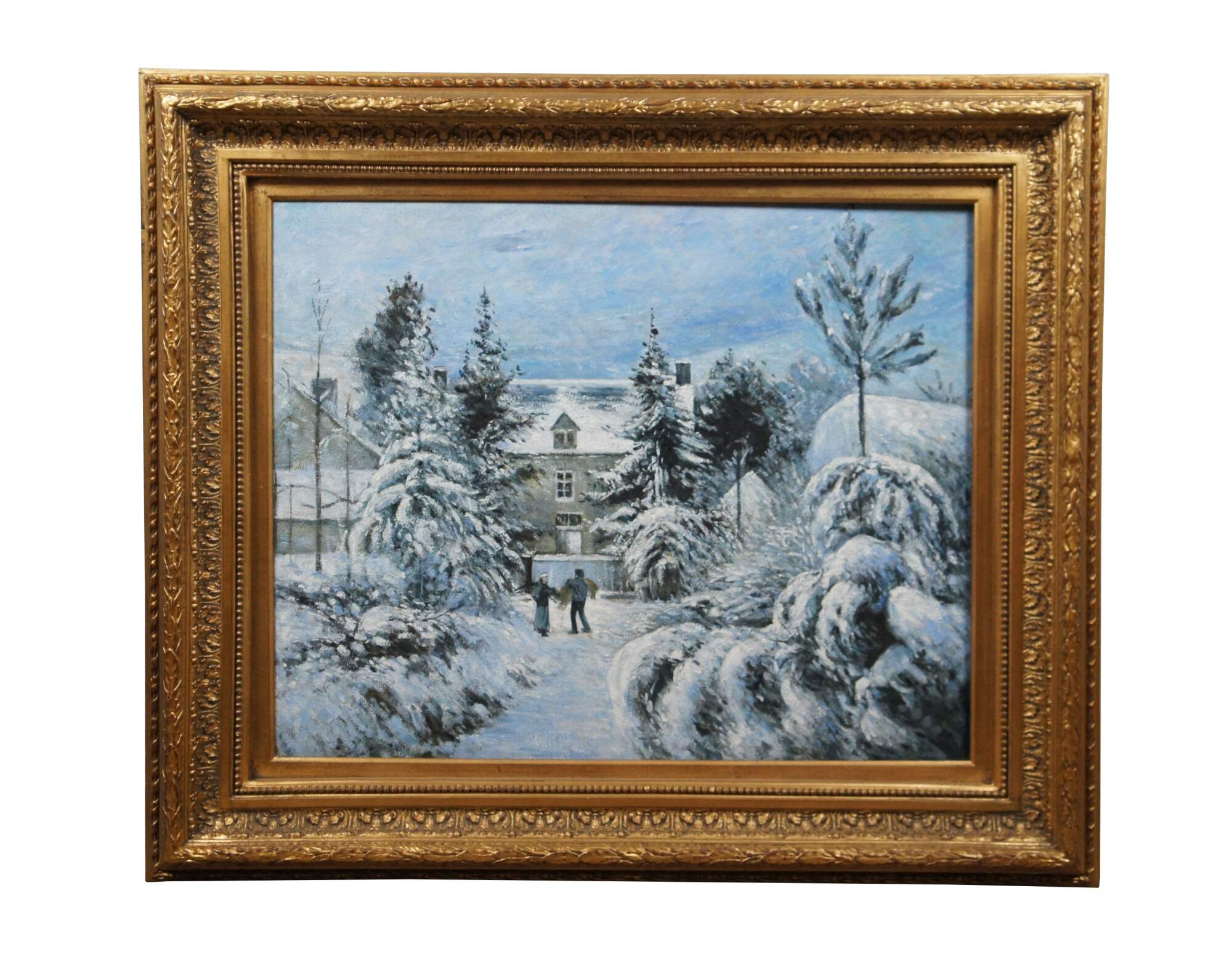
Shipping:
Free Shipping Included
Delivery:
Estimated 2-15 Business Days
Payments:
Credit Card, Check, Cash, PayPal, Apple Pay, Venmo
Returns:
30 Days 100% Money Back Guarantee, Buyer Pays Return Shipping
Description
Late 20th century oil painting on canvas after "Piette's House at Montfoucault" by Camille Pissarro. Depicts a view of a house peeking through a landscape of snowcovered pine trees with two figures at the center. Foliate carved / beveled giltwood frame.
"During the winter of 1874, Pissarro visited his friend and fellow artist Ludovic Piette at his farmhouse in the village of Montfoucault, southwest of Paris. This painting shows the house and surrounding gardens blanketed in deep snow. The artist used a limited range of colors and worked quickly in the cold, leaving the bare canvas visible in places between areas of thickly applied paint." (Original is housed at The Clark Art Institute in Massachusetts)
"Jacob Abraham Camille Pissarro (10 July 1830 – 13 November 1903) was a Danish-French Impressionist and Neo-Impressionist painter born on the island of St Thomas (now in the US Virgin Islands, but then in the Danish West Indies). His importance resides in his contributions to both Impressionism and Post-Impressionism. Pissarro studied from great forerunners, including Gustave Courbet and Jean-Baptiste-Camille Corot. He later studied and worked alongside Georges Seurat and Paul Signac when he took on the Neo-Impressionist style at the age of 54. In 1873 he helped establish a collective society of fifteen aspiring artists, becoming the "pivotal" figure in holding the group together and encouraging the other members. Art historian John Rewald called Pissarro the "dean of the Impressionist painters", not only because he was the oldest of the group, but also "by virtue of his wisdom and his balanced, kind, and warmhearted personality". Paul Cézanne said "he was a father for me. A man to consult and a little like the good Lord", and he was also one of Paul Gauguin's masters. Pierre-Auguste Renoir referred to his work as "revolutionary", through his artistic portrayals of the "common man", as Pissarro insisted on painting individuals in natural settings without "artifice or grandeur". Pissarro is the only artist to have shown his work at all eight Paris Impressionist exhibitions, from 1874 to 1886. He "acted as a father figure not only to the Impressionists" but to all four of the major Post-Impressionists, Cézanne, Seurat, Gauguin, and van Gogh." (Source: Wikipedia)
Condition
Good Overall - Gentle wear
Dimensions
40" x 3" x 34" / Sans Frame - 29.5" x 23.5" (Width x Depth x Height)
You May Also Like